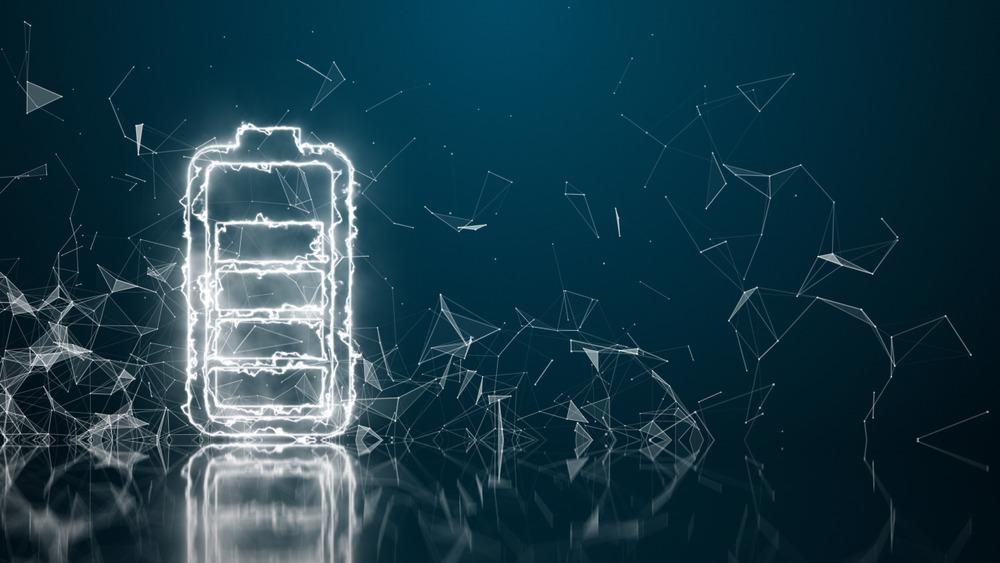In a recent study published in the journal Energy Storage Materials, researchers developed a novel lithiophilic composite interlayer material that can be incorporated into the polypropylene (PP) separator, which in turn can inhibit dendritic growth of lithium (Li) in Li-ion batteries (LIBs).

Study: Fe3N@N-doped graphene as a lithiophilic interlayer for highly stable lithium metal batteries. Image Credit: Immersion Imagery/Shutterstock.com
The interlayer material consists of ferric nitride (Fe3N) nanoparticles (NPs) embedded and wrapped in nitrogen (N)-doped graphene nanosheets (Fe3N@NG).
The Fe3N@NG layer with high Li affinity provided suitable deposition sites for Li-ions on the separator, which resulted in uniform and compact Li plating/stripping on the current collector during charging/discharging. The prepared Li/LiFePO4 cell demonstrated an ultra-long-life of 2300 h at 5 mA cm−2 and a low-capacity decay rate of 0.08%/cycle at 2 ℃.
Background
There has been a continuous attempt to replace the commonly used graphite anode of a LIB with Li-based alloys or composites due to the high theoretical storage capacity (~3860 mAh g−1), low redox potential (-3.04 V vs. SHE [standard hydrogen electrode]), and low density (0.53 g cm−3) of Li metal.
However, the uncontrolled dendrite growth of Li during cyclic plating/stripping impales the PP separator, leading to internal short circuits of batteries. Additionally, even if there are no short circuits, these protrusions trigger side reactions, which sharply increase the temperature and results in thermal runaway or even catching fire.
The separator of a LIB plays an important role in controlling Li-ion flux between Li cathode and Li alloy-based anode. A uniform Li-ion flux means uniform deposition of Li on the anode during charging. However, a simple PP separator has less control over the Li-ion flux than electrode-electrolyte interaction. Many functional materials have been incorporated to modify the properties of the separator. These are SiO2, TiO2, Al2O3, carbon-based materials, layered double hydroxides, metal-organic frameworks, and many more.
Other than lithiophilic materials, high polar functional groups also attract Li-ions, offers high coulombic efficiency, and prolong electrochemical stability. Thus, transition metal dichalcogenides or transition metal pnictides such as Fe3N may improve the electrochemical performance of the Li anode owing to their strong polarity.
About the Study
In this study, researchers fabricated a protective layer of Fe3N NPs wrapped N-doped reduced graphene oxide (rGO) (i.e. Fe3N@NG) on a standard PP separator. The N-doped rGO provided high mechanical strength and abundant heteroatomic N, whereas Fe3N NPs provided abundant Li deposition sites that inhibited the Li dendrite growth.
The Fe3N@NG were synthesized by heating a mixture of Fe2O3 precursor and 20 wt.% diluted GO in a porcelain pot under NH3 atmosphere at 500 ℃. This resulted in ion exchange between Fe2O3 precursor and NH3 and reduced the GO to form rGO, simultaneously. Subsequently, the functionalized Fe3N@NG/PP separator was prepared by vacuum filtration of Fe3N@NG dispersed liquid using PP. Finally, the obtained film was washed in distilled water and dried in an electric oven at 60 °C for 6 hours.
More from AZoM: Laser Diffraction Particle Size Analysis of Cement
Observations
The scanning electron microscopy (SEM) images revealed that the chrysanthemum pistil-like morphology of the Fe2O3 precursor transformed into granular Fe3N. Moreover, the granular Fe3N NPs had a porous structure. The NG wrapped Fe3N NPs had assize of 20-30 nm. Fe3N@NG had a high specific surface area of 17.06 m2 g−1 with an average pore-size distribution of 10.6 nm. Theis porous structure provided abundant active sites for Li transport and nucleation during plating/charging.
The shape of the Fe3N@NG/PP separator remained unchanged up to a temperature of 150 °C, which was much higher than the NG/PP and Fe3N/PP samples, evidencing higher thermal stability. The contact angles of bare PP, NG/PP, Fe3N/PP, and Fe3N@NG/PP were 41.75°, 26.19°, 22.26°, and 5.23°, respectively. Hence, Fe3N@NG/PP had the lowest contact angle and highest electrolyte wettability, which was favorable for maximum and uniform Li diffusion.
The density functional theory (DFT) results showed that the Fe and N atom combination in Fe3N had more Li affinity than only Fe atoms. This Li affinity/lithiophicity further increased for the Fe3N@NG layer.
Conclusions
To conclude, the researchers of this study fabricated a protective interlayer of Fe3N@NG on a PP separator. The rGO layer provided better mechanical strength, while the porous granular Fe3N NPs provided abundant lithiophilic active sites for Li-ion diffusion and nucleation.
Moreover, low electrolyte wettability, high specific surface area, high dimensional stability up to 150 °C, ultra-long-life, and low-capacity decay rate, makes Fe3N@NG/PP a promising functionalized separator for uniform Li flux and an inhibitor of uncontrolled Li dendrite growth.
Disclaimer: The views expressed here are those of the author expressed in their private capacity and do not necessarily represent the views of AZoM.com Limited T/A AZoNetwork the owner and operator of this website. This disclaimer forms part of the Terms and conditions of use of this website.
Source:
Zhang, X., Ma, F., Srinivas, K., Yu, B., Chen, X., Wang, B., Wang, X., Liu, D., Zhang, Z., He, J., Chen, Y., Fe3N@N-doped graphene as a lithiophilic interlayer for highly stable lithium metal batteries, Energy Storage Materials, 45, 2022, 656-666, https://www.sciencedirect.com/science/article/pii/S2405829721005912